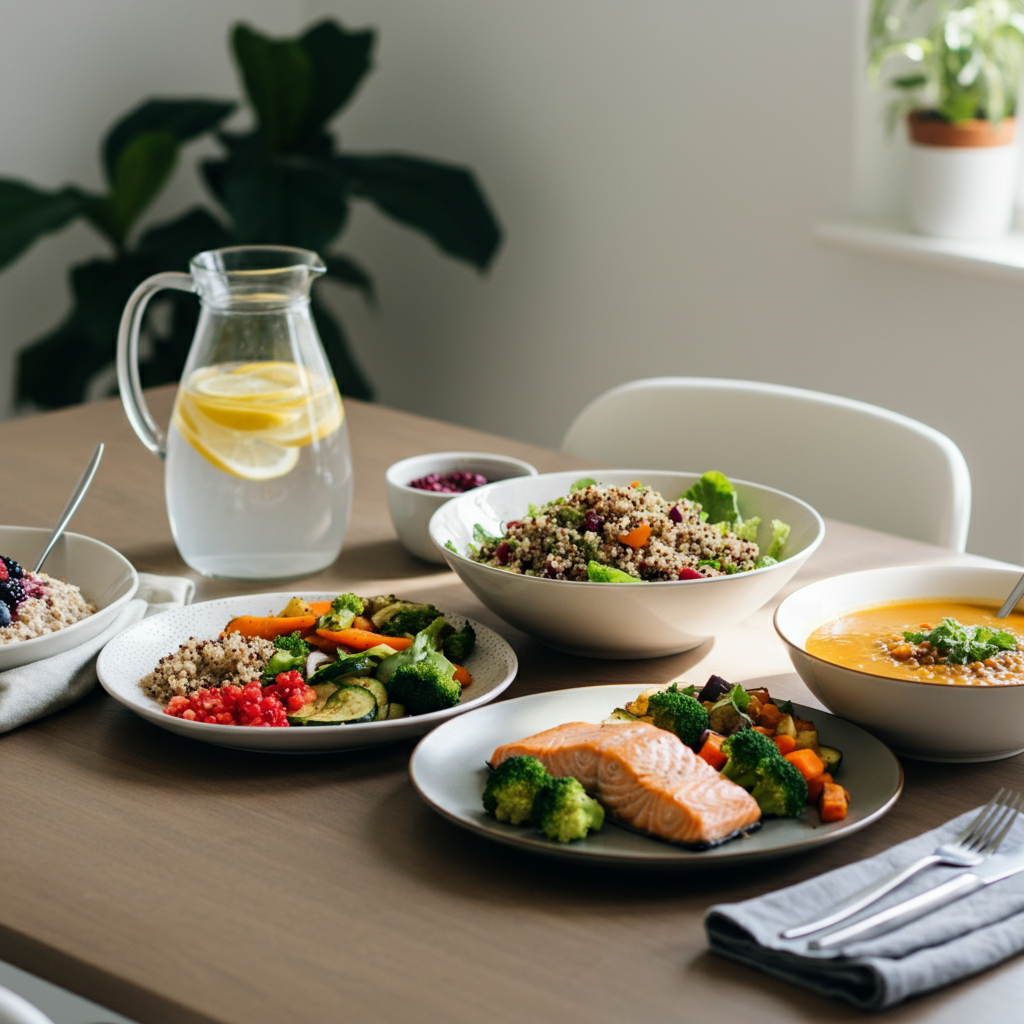Did you know that over 90% of Americans don’t meet the recommended daily intake of fruits and vegetables? With so much conflicting advice out there, it’s no wonder nutrition feels confusing. That’s why TimesHealthMag is here to simplify things with expert-backed tips to help you achieve a healthier, more sustainable lifestyle.
This guide will walk you through mastering the basics of nutrition—from balancing macronutrients to creating a personalized eating plan. By the end of this post, you’ll feel empowered to make informed food choices that nourish your body and mind.
Understanding Macronutrients
Macronutrients are the building blocks of your diet. They include carbohydrates, proteins, and fats, each playing a crucial role in keeping your body fueled and functioning optimally.
Why Macronutrients Matter
- Carbohydrates provide energy and support brain function. Opt for complex carbs like whole grains, quinoa, and sweet potatoes.
- Proteins are essential for muscle repair and growth. Include lean meats, eggs, tofu, or lentils in your meals.
- Fats support hormone production and help absorb certain vitamins. Choose healthy fats from avocados, nuts, and fish.
Tips for Balancing Macronutrients
To maintain balance, aim for meals that are approximately:
- 40% carbs
- 30% protein
- 30% healthy fats
For example, try a quinoa salad with grilled chicken and avocado, which offers the perfect blend of energy, protein, and healthy fats.
The Power of Micronutrients
While macros take center stage, micronutrients (vitamins and minerals) are equally essential for health. These nutrients support everything from immune function to bone strength.
Key Micronutrients to Prioritize
- Vitamin C (found in citrus fruits and bell peppers) boosts immunity.
- Iron (from spinach, lentils, and red meat) prevents anemia.
- Calcium (in dairy, leafy greens, and fortified products) strengthens your bones.
Dr. Emily Carter, a nutritionist at TimesHealthMag, says, “Focus on whole, unprocessed foods to maximize your nutrient intake.”
Varied Diet = Micronutrient Success
Eat the rainbow! Incorporating diverse fruits, vegetables, grains, and protein sources ensures you’re getting your full spectrum of micronutrients.
Hydration: The Overlooked Nutrient
Water isn’t just for quenching thirst. It’s vital for digestion, energy levels, and glowing skin.
Benefits of Staying Hydrated
- Improves focus and cognitive performance
- Keeps digestion smooth and regular
- Enhances skin elasticity and radiance
Dr. James Smith, a health expert at TimesHealthMag, emphasizes, “Hydration is just as important as food. Don’t underestimate the power of water.”
Easy Hydration Tips
- Start your morning with a glass of water before coffee.
- Carry a reusable water bottle everywhere you go.
- Add flavor with fresh fruit or herbs like mint.
Aim for at least 8 cups of water per day or adjust based on your activity level and climate.
Smart Snacking Strategies
Snacking gets a bad rap, but when done right, it can keep your energy stable and prevent overeating later.
Healthy Snack Ideas
- Apple slices with almond butter provide a blend of fiber and healthy fats.
- Hard-boiled eggs are a portable source of protein.
- Greek yogurt with honey and granola satisfies your sweet tooth while offering probiotics.
Tips for Mindful Snacking
- Plan Ahead: Pack snacks like nuts or trail mix to avoid vending machine temptations.
- Portion Control: Use small containers to avoid eating straight from the bag.
- Watch for Emotional Eating: Check in with yourself—is it hunger, stress, or boredom?
Debunking Common Nutrition Myths
There’s no shortage of nutrition myths online, so here’s the truth behind a few popular ones.
- “Carbs are bad for you.”
Actually, carbs are the body’s primary energy source. The key is to focus on whole carbs (like oats and brown rice) instead of refined ones (like white bread).
- “Fats make you fat.”
Healthy fats are essential for brain function and hormone production. Incorporate sources like olive oil, nuts, and salmon for heart health.
- “Skipping meals helps you lose weight.”
Skipping meals often leads to overeating later. Regular, balanced meals keep your metabolism steady.
Dr. Emily Carter advises, “A balanced diet is key to a healthy lifestyle. Ignore the fads and follow the science.”
Creating a Sustainable Eating Plan
The best diet isn’t just healthy; it’s one you can stick to. Sustainability is the key to lasting change.
How to Create Your Plan
- Set Realistic Goals: Focus on progress, not perfection. Replace one processed snack with a piece of fruit this week.
- Make Gradual Changes: Swap one unhealthy item at a time instead of overhauling your entire diet overnight.
- Allow Room for Flexibility: Love dessert? Indulge occasionally. Deprivation leads to burnout.
Example Day of Sustainable Eating
- Breakfast: Oatmeal with berries and nuts
- Lunch: Whole-grain wrap with hummus and veggies
- Dinner: Baked salmon with roasted vegetables
- Snack: Apple slices with almond butter
By focusing on variety and balance, you’ll create a plan that nourishes both your body and soul.
Take Charge of Your Health Today
Nutrition doesn’t have to be overwhelming. By incorporating simple changes like drinking more water, eating colorful meals, and balancing macronutrients, you’ll be well on your way to a healthier lifestyle.
For more expert-backed advice, visit TimesHealthMag, where we’re here to support your health and wellness goals every step of the way. And remember to subscribe for regular updates and tips!
Inspired by this post? Share it with a friend or drop your questions in the comments!



